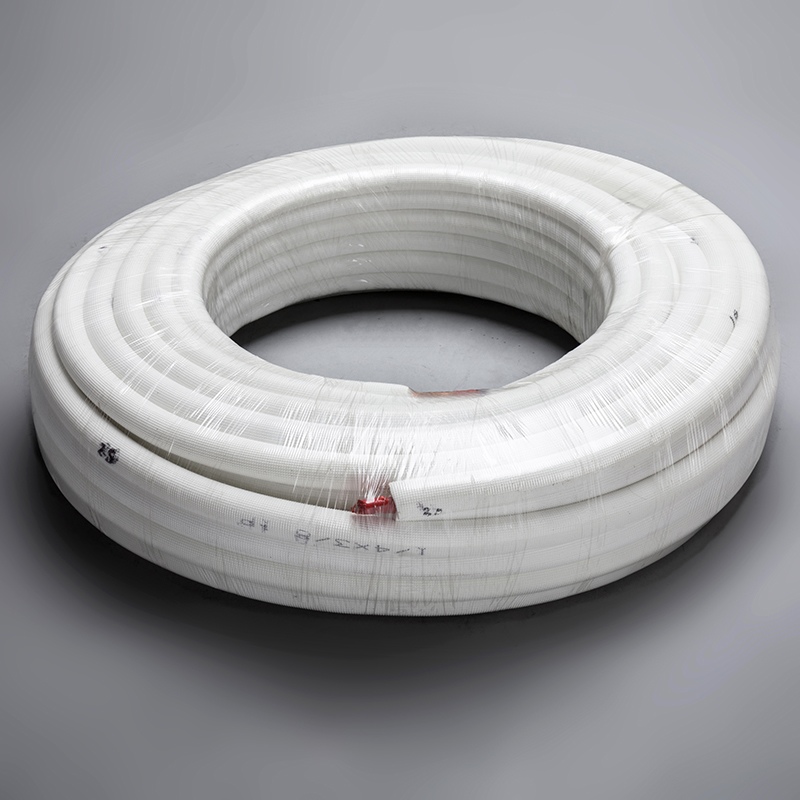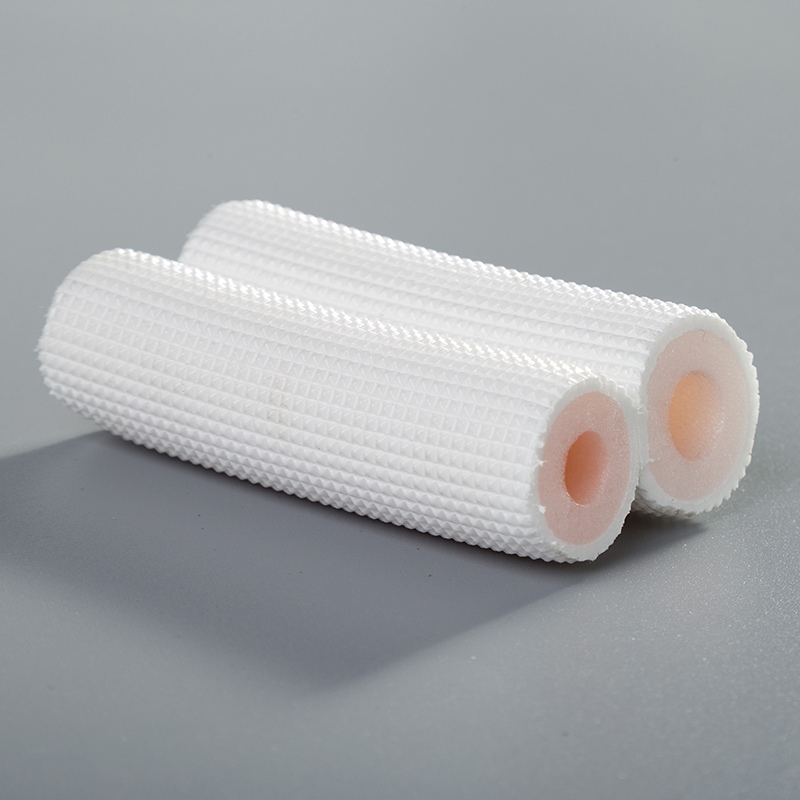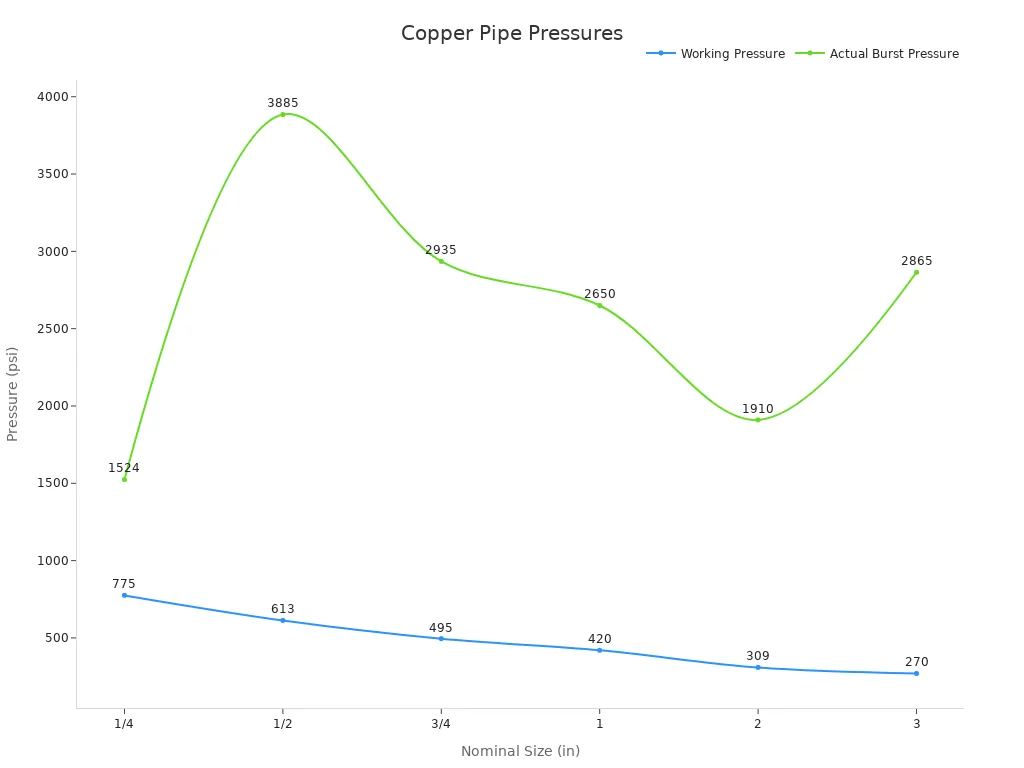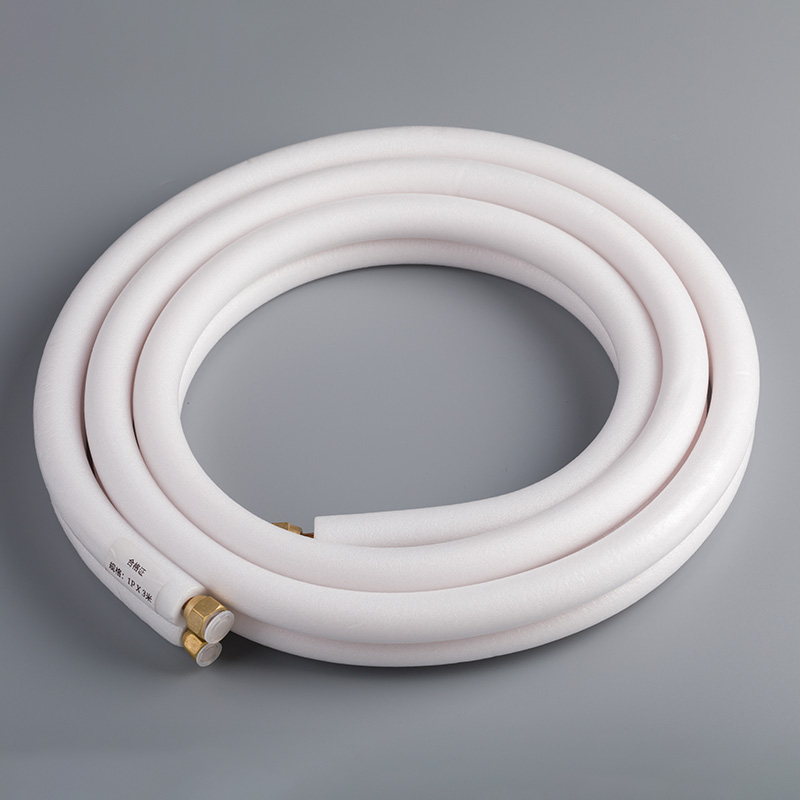How to Select the Best Copper Pipe for Plumbing

Copper pipes are a strong and trusted choice for plumbing, especially when you consider copper pipe wholesale options. They last long, so you spend less on repairs and upkeep. Copper pipes fail 20% less often than plastic ones, making them safer for carrying water. Experts say copper pipes last 2-3 times longer than PVC, which saves money and gives you less to worry about. For homes or businesses, purchasing copper pipes wholesale is a cost-friendly way to acquire high-quality materials.
Key Takeaways
Choose Type K copper pipe for high-pressure systems. It lasts over 100 years and is ideal for underground plumbing.
Type L copper pipe offers a balance of strength and cost. It works well for home plumbing and lasts 50 to 70 years.
Select Type M copper pipe for budget-friendly projects. It is suitable for low-pressure jobs but lasts only up to 20 years.
Always check local building codes before installation. Following these rules ensures safety and compliance.
Regular maintenance of copper pipes can prevent leaks and extend their lifespan. Inspect for rust and clean to avoid build-up.
Types of Copper Pipes

Picking the right copper pipes means knowing their types. Each type works differently and has its own uses. Below is a simple guide to Type K, Type L, and Type M copper pipes to help you decide.
Type K Copper Pipe
Type K copper pipe is the strongest and most durable option. Its thick walls make it great for high-pressure jobs like underground water mains or HVAC systems. It’s often used in big projects where reliability matters.
Tip: Choose Type K copper pipe for high-pressure systems or pipes that need to last over 100 years.
Here’s a quick look at its cost and lifespan:
Type | Installation Cost | Longevity (Years) |
|---|---|---|
Type K | Highest | Over 100 |
Type K copper pipe lasts a long time but costs more. Pick this type if durability is more important than saving money upfront.
Type L Copper Pipe
Type L copper pipe is a mix of strength and affordability. Its medium-thick walls make it useful for home plumbing, drinking water systems, and HVAC setups. It works well indoors and outdoors.
Type L copper pipe is strong and efficient. For example, a 1/2-inch pipe can handle 613 psi and bursts at 3885 psi. This makes it good for medium-pressure systems.
Nominal Size (in) | Working Pressure (psi) | Actual Burst Pressure (psi) |
|---|---|---|
1/4 | 775 | 1524 |
1/2 | 613 | 3885 |
3/4 | 495 | 2935 |
1 | 420 | 2650 |
2 | 309 | 1910 |
3 | 270 | 2865 |

Note: Type L copper pipe is a solid choice for projects needing medium durability and flexibility. It lasts 50 to 70 years, making it reliable for most homes.
Type M Copper Pipe
Type M copper pipe is the cheapest option. Its thinner walls make it good for low-pressure jobs like drains and vents. It’s often used in homes where saving money is key.
Tests show how Type M copper pipe performs under certain conditions:
Test Type | Description |
|---|---|
Cuprosolvency Testing | Small tests using 8.5” pieces of new 1/2” Type M copper pipe to find minimum orthophosphate doses. |
Water Conditions | Fake drinking water with cooler temperatures (15 °C), trace NOM (0.2 mg/L), and high sulfate (200 mg/L) was used. |
Sample Size | 320 pipe pieces were tested in 16 different water setups. |
Testing Method | Water was changed three times weekly to mimic flow, with samples taken for copper levels. |
Type M copper pipe is affordable but doesn’t last as long—up to 20 years. It’s best for projects where saving money is the main goal.
Tip: Use Type M copper pipe for low-pressure systems when keeping costs low is important.
DWV Copper Pipe
DWV copper pipe means "Drain, Waste, and Vent." It is used in systems that don’t need pressurized water. This pipe carries wastewater and vents gases outside your home or building. Its thinner walls make it less strong than other copper pipes. However, it works well for low-pressure jobs.
Key Features of DWV Copper Pipe:
Lightweight Design: Thin walls make it lighter and easier to install.
Non-Pressurized Use: Best for drains and vents without high water pressure.
Corrosion Resistance: Copper resists rust, lasting longer in waste systems.
Tip: Pick DWV copper pipe for drains where pressure isn’t needed. It’s a budget-friendly option for waste and vent systems.
DWV copper pipe is common in homes and businesses for waste plumbing. It’s not good for drinking water or high-pressure fluids. But it works great for its main purpose.
AC Copper Pipe
AC copper pipe is made for air conditioning systems. It is strong and handles refrigerants well, making it popular with HVAC experts. This pipe moves refrigerants between indoor and outdoor cooling units.
Why Choose AC Copper Pipe?
Pressure Resistance: It handles the high pressure needed in cooling systems.
Thermal Conductivity: Copper transfers heat efficiently, helping air conditioners cool better.
Longevity: When installed correctly, AC copper pipe lasts many years.
Here’s a comparison of pressure strength and lifespan for copper pipes:
Type | Wall Thickness | Pressure Resistance | Longevity |
|---|---|---|---|
K | Thickest | Highest | Very High |
L | Moderately Thick | Moderate | High |
M | Thinnest | Lowest | Lower |
Note: AC copper pipe is key for HVAC systems. It handles refrigerants and pressure well, making it ideal for cooling projects.
When installing AC copper pipe, use proper tools to avoid leaks. Insulation helps keep it efficient and stops condensation.
Advantages and Disadvantages of Copper Pipes
Why Use Copper Pipes for Plumbing
Copper pipes have many benefits, making them a top plumbing choice. They last a long time, so you won’t need to replace them often. Copper pipes are strong and prevent leaks, keeping water clean and safe. They are also easy to adjust during installation, saving time and effort.
Unlike plastic pipes, copper doesn’t release harmful chemicals or VOCs. This makes it safer for carrying water in homes and businesses. Copper is fire-resistant, meaning it won’t burn or catch fire. Since 2000, many plumbers prefer copper for its dependability and ability to keep water clean over time.
Tip: Pick copper pipes if you want safety, durability, and clean water.
Pros and Cons of Type K Copper Pipe
Type K copper pipe is the toughest of all copper pipes. Its thick walls make it perfect for high-pressure jobs like underground water lines or HVAC systems. It can last over 100 years, making it a great choice for long-term use.
However, Type K copper pipe costs more upfront. Its thickness makes installation harder, which can raise labor costs. Even with these downsides, its strength and reliability make it worth the price for important systems.
Advantages | Disadvantages |
|---|---|
Lasts over 100 years | Costs more to buy |
Handles high pressure very well | Harder to install |
Great for underground systems | Less flexible for small changes |
Note: Use Type K copper pipe when strength matters more than cost.
Pros and Cons of Type L Copper Pipe
Type L copper pipe offers a good mix of strength and price. Its medium-thick walls make it useful for both indoor and outdoor plumbing. It works well for medium-pressure systems like drinking water lines and HVAC setups. With a lifespan of 50 to 70 years, it’s reliable for homes and businesses.
On the downside, Type L copper pipe isn’t as strong as Type K. It’s not the best for high-pressure or underground systems. But it’s cheaper and easier to install, making it a popular choice for everyday plumbing.
Advantages | Disadvantages |
|---|---|
Affordable and reliable | Doesn’t last as long as Type K |
Works for medium-pressure systems | Not good for high-pressure jobs |
Easy to install indoors or outdoors | Less durable in tough conditions |
Tip: Choose Type L copper pipe for projects needing a balance of cost and quality.
Pros and Cons of Type M Copper Pipe
Type M copper pipe is the cheapest among all copper pipes. Its thin walls make it good for low-pressure jobs like home water lines and drains. If you need a budget-friendly option, this pipe is a smart pick.
Advantages:
Cost-Effective: It’s the least expensive, perfect for saving money.
Lightweight: Thin walls make it simple to carry and install.
Good for Low-Pressure Systems: Works well for drains and vent systems.
Disadvantages:
Shorter Lifespan: It lasts only about 20 years, less than others.
Limited Strength: Thin walls can’t handle high pressure or tough conditions.
Not for Underground Use: It can get damaged by soil or heavy loads.
Tip: Pick Type M copper pipe for low-pressure jobs when saving money is key. Don’t use it for high-pressure or underground work.
Pros and Cons of DWV Copper Pipe
DWV copper pipe stands for "Drain, Waste, and Vent." It’s made for systems without water pressure. This pipe is often used to move waste and vent gases out of buildings. For drainage, DWV copper pipe is a good choice.
Advantages:
Lightweight: Thin walls make it easy to move and install.
Corrosion-Resistant: Copper doesn’t rust, so it lasts longer in waste systems.
Affordable: It’s a low-cost option for non-pressurized uses.
Disadvantages:
Not for Pressurized Systems: Thin walls can’t handle water pressure.
Limited Use: Only works for drains and venting systems.
Note: Use DWV copper pipe for waste systems without pressure. It’s a dependable and cost-friendly choice for homes and businesses.
Factors to Consider When Choosing Copper Pipes
Pressure and Temperature Requirements
Think about pressure and temperature when picking copper pipes. These pipes are strong and handle pressure well, but their performance changes with different environments and fluid temperatures.
Here’s what tests found:
Fluid stayed at 35°F (1.7°C) to mimic cold water systems.
Outside conditions were set to 90°F (32.2°C) with 90% humidity for tough scenarios.
Samples were weighed often to measure water buildup.
These tests prove copper pipes work in extreme conditions. They’re great for hot and cold water systems. Always check pipe size and thickness to match your needs.
Tip: Use Type K or Type L copper pipes for high-pressure systems. They’re thicker and last longer in tough environments.
Budget and Cost Considerations
Copper pipes are affordable but vary in price by type and size. Comparing them to other materials helps you choose wisely.
Material | Cost per Foot | Installation Difficulty | Durability |
|---|---|---|---|
Copper | $2-$8 | Hard | Moderate |
Stainless Steel | $3-$5 | Easy | High |
Installing copper pipes costs more due to their weight and thickness. But they last longer, making them worth the money. Stainless steel is easier to install but isn’t as versatile for hot and cold water systems.
Note: On a budget? Pick Type M copper pipes for low-pressure jobs. For stronger pipes, choose Type L or Type K, even if they cost more upfront.
Installation Environment and Durability
Where you install copper pipes affects how long they last. Water quality, flow speed, and outside forces can wear them down.
Erosion Damage: Fast water or dirt can thin the pipe walls and cause leaks.
Bad Water Chemistry: Chemicals like chlorine can make pipes rust faster.
Pressure Surges: Sudden water pressure can break pipes and shorten their lifespan.
Follow installation rules to keep copper pipes working longer. Treat water properly and control flow to avoid damage. Pick the right pipe thickness to handle tough conditions.
Tip: For outdoor or harsh areas, use Type K copper pipes. Their thick walls protect against damage from erosion and pressure changes.
Compliance with Local Building Codes
Knowing local building codes is very important for plumbing. These rules keep your home safe and your system working well. Ignoring them can cause fines, failed checks, or unsafe plumbing.
Why Building Codes Are Important
Building codes protect you and your property. They set rules for pipe types, sizes, and how to install them. Following these rules ensures your plumbing is safe and works properly.
Tip: Check local building codes before starting any plumbing work. This avoids mistakes and saves money.
Common Rules for Copper Pipes
Local codes often say which copper pipes to use. Here are some common rules:
Pipe Type: Use Type K for underground pipes. Type L is best indoors.
Pipe Size: Codes may require certain pipe sizes for good water flow.
Pressure Ratings: Pipes must handle specific pressure levels safely.
Installation Rules: Proper soldering and fittings are often required.
Requirement | Description |
|---|---|
Pipe Type | Type K for underground, Type L for indoor plumbing |
Minimum Diameter | Ensures good water flow |
Pressure Ratings | Stops leaks and pipe bursts |
Installation Standards | Explains soldering and fitting methods |
How to Follow the Rules
To follow building codes, plan and research carefully. Here’s how to stay on track:
Ask Local Officials: Contact your city or county for code details.
Hire Experts: Work with licensed plumbers who know the rules.
Use Approved Pipes: Pick copper pipes that meet local standards.
Get Inspections: Have your work checked during and after installation.
Note: Codes differ by location. What’s allowed in one place may not be in another. Always check your area’s rules.
What Happens If You Don’t Follow Codes
Not following codes can cause big problems, like:
Failed Inspections: You might need expensive fixes or replacements.
Fines: Breaking rules can lead to penalties from local authorities.
Safety Issues: Bad plumbing can cause leaks, damage, or health risks.
Alert: Ignoring codes can void insurance for plumbing damage. Follow the rules to protect your home and money.
By following building codes, your plumbing will be safe, legal, and efficient. This saves money and gives you confidence in your project.
Practical Tips to Install Copper Pipes

Tools and Equipment for Installation
Having the right tools makes installation easier and faster. You’ll need a pipe cutter, deburring tool, and propane torch. A pipe cutter makes clean cuts. The deburring tool smooths sharp edges to protect fittings. The propane torch is used to solder joints securely.
Supporting pipes is very important. Horizontal pipes up to 1 inch need support every 8 feet. Larger pipes need support every 10 feet. Vertical pipes should be supported every 10 feet or at each floor. Proper support stops sagging and keeps pipes strong. Water hammer arrestors can stop pressure surges and protect your system.
Aspect | Details |
|---|---|
Support Intervals | 1-inch pipes need support every 8 feet; larger pipes every 10 feet. |
Resistance to Crushing | A 1-inch copper pipe can hold 700 pounds before bending. |
Water Hammer Prevention | Arrestors stop pressure surges and don’t need maintenance. |
Durability | Well-installed copper pipes can last as long as the building. |
Preparing Copper Pipes for Installation
Good preparation helps the installation go smoothly. First, measure and cut the pipes to the right length. Use a pipe cutter for neat edges. After cutting, smooth the edges with a deburring tool. Clean the pipe ends and fittings with sandpaper or a wire brush to remove dirt or rust. This helps the solder stick better.
Before soldering, apply flux to the pipe ends and fittings. Flux stops oxidation and helps the solder spread evenly. Put the pipes and fittings together tightly before heating them.
Common Installation Mistakes to Avoid
Avoiding mistakes can save time and money. Leaks often happen when pipes and fittings aren’t joined properly. Make sure all parts are clean and soldered well. Forgetting about expansion and contraction can damage pipes over time. Leave space for pipes to expand and shrink naturally.
Skipping support brackets is another common mistake. Pipes without support can sag or break. Always follow support rules to keep your system strong.
Tip: Check all connections and use the right tools to avoid expensive repairs later.
Maintenance Tips for Long-Term Performance
Taking care of your copper pipes helps them last many years. Simple maintenance stops leaks, rust, and other problems. Follow these easy tips to keep your plumbing working well.
1. Check Pipes Often
Look at your copper pipes for damage or wear. Green or white spots mean rust is starting. Pay close attention to joints and connections, as they leak more often. Finding problems early saves money on big repairs.
2. Clean Pipes to Avoid Build-Up
Hard water can leave minerals inside copper pipes over time. Use a water softener to stop this. Wipe the outside of pipes with a damp cloth to remove dirt. Clean pipes help water flow better and last longer.
3. Watch Water Pressure
Too much water pressure can harm copper pipes and cause leaks. Use a gauge to check it. The best range is 40 to 60 psi. If it’s too high, add a valve to lower the pressure and protect your pipes.
4. Stop Pipes from Freezing
Cold weather can freeze and break copper pipes. Cover exposed pipes with foam or heat tape. In very cold weather, let faucets drip a little to keep water moving and stop freezing.
5. Get Professional Help
Hire a plumber to check your pipes regularly. Experts can find hidden problems and make sure your system follows local rules. Regular checks save money by preventing bigger issues later.
Tip: Write down inspections and repairs in a log. This keeps you organized and helps your copper pipes stay in great shape.
By following these tips, your copper pipes will work well and last a long time.
Copper Pipe Wholesale: When to Buy in Bulk
Benefits of Buying Copper Pipes in Bulk
Buying copper pipes in large amounts has many benefits. Wholesale orders lower costs a lot. Suppliers often give discounts for big purchases, saving money on good materials. Bulk buying makes sure you have enough pipes for your whole project. This stops delays from running out of supplies.
Another advantage is getting pipes with the same quality. Wholesale orders give you pipes from one batch, making them consistent. Buying in bulk also makes planning easier. You won’t need to order many times or wait for deliveries, saving time and effort.
Tip: For big plumbing or HVAC projects, wholesale copper pipes can save money and keep your work on track.
Wholesale Options for Plumbing and HVAC Projects
Picking the right supplier is important for plumbing and HVAC jobs. Many suppliers sell copper pipes in bulk, including types like Type K, Type L, and Type M. Choose suppliers with good reviews and a strong reputation. Reliable sellers often offer warranties to guarantee product quality.
Local suppliers are handy because they cut shipping costs and deliver quickly. Online suppliers have more choices and better prices. Some even offer discounts and free shipping for big orders.
When selecting a supplier, compare prices and check certifications. Certified suppliers follow safety rules, ensuring durable pipes. Ask about minimum order sizes and delivery times to avoid problems.
Note: Take time to research suppliers to find one that fits your budget and project needs.
Copper pipes are strong and useful for plumbing and HVAC work. Picking the right type depends on your needs, like pressure, cost, and where it’s installed. Installing and caring for pipes properly helps them last longer.
Experts install pipes correctly to prevent leaks and breaks.
They follow rules to keep your system safe and legal.
Using special tools and warranties ensures pipes work well for years.
By knowing these tips and acting early, you can have a dependable copper pipe system that works efficiently for a long time.
FAQ
1. What is the best type of copper pipe for underground plumbing?
Type K copper pipe is ideal for underground plumbing. Its thick walls can handle high pressure and resist rust. This makes it strong and long-lasting in tough conditions.
Tip: Check local building rules to ensure Type K is allowed in your area.
2. Can copper pipes be used for both hot and cold water systems?
Yes, copper pipes work great for both hot and cold water. They transfer heat well and don’t rust easily, making them dependable for different temperatures.
Note: Type L copper pipe is a good option for most home water systems.
3. How do I prevent copper pipes from freezing in winter?
Cover exposed pipes with foam or heat tape. During very cold weather, let faucets drip a little to keep water moving. This stops ice from forming inside the pipes.
Alert: Frozen pipes can break and cause expensive repairs. Protect them early.
4. Are copper pipes safe for drinking water?
Copper pipes are safe for drinking water. They don’t leak harmful chemicals and stop bacteria from growing. This keeps your water clean and safe to drink.
Tip: Check pipes often for rust to keep water quality high.
5. How long do copper pipes typically last?
Copper pipes can last between 20 and 100 years. Type K lasts the longest, while Type M has a shorter lifespan.
Type | Lifespan |
|---|---|
Type K | Over 100 years |
Type L | 50-70 years |
Type M | Up to 20 years |
Note: Taking care of your pipes can help them last longer.
See Also
Explore Top Copper Pipe Fittings For Your Plumbing Needs
Five Key Steps To Selecting The Correct Copper Pipe Size
Find The Perfect Insulation Solution For Copper Pipes


